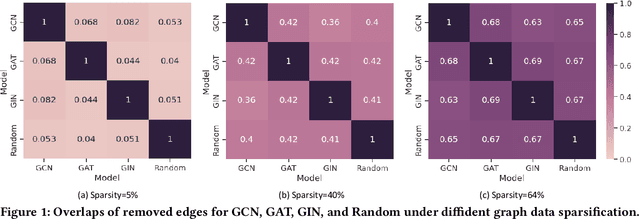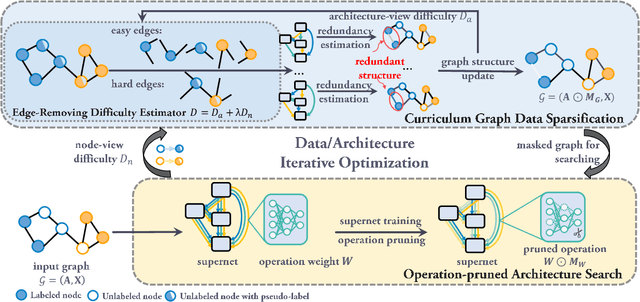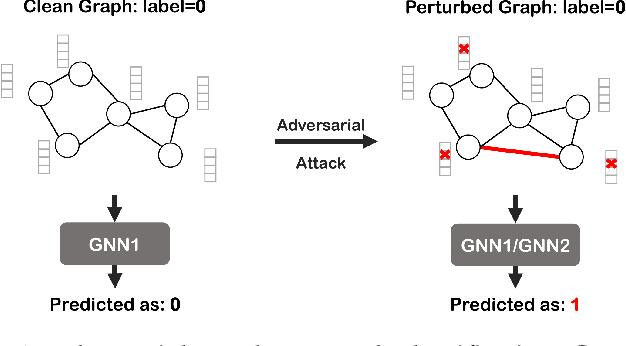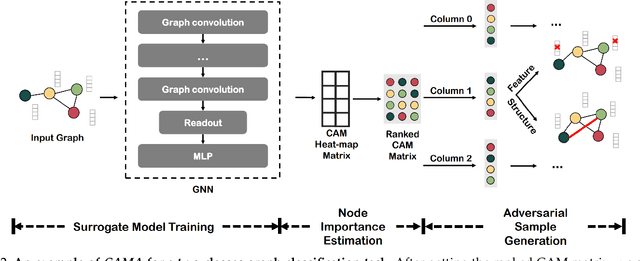Beini Xie
Towards Lightweight Graph Neural Network Search with Curriculum Graph Sparsification
Jun 24, 2024



Abstract:Graph Neural Architecture Search (GNAS) has achieved superior performance on various graph-structured tasks. However, existing GNAS studies overlook the applications of GNAS in resource-constraint scenarios. This paper proposes to design a joint graph data and architecture mechanism, which identifies important sub-architectures via the valuable graph data. To search for optimal lightweight Graph Neural Networks (GNNs), we propose a Lightweight Graph Neural Architecture Search with Graph SparsIfication and Network Pruning (GASSIP) method. In particular, GASSIP comprises an operation-pruned architecture search module to enable efficient lightweight GNN search. Meanwhile, we design a novel curriculum graph data sparsification module with an architecture-aware edge-removing difficulty measurement to help select optimal sub-architectures. With the aid of two differentiable masks, we iteratively optimize these two modules to efficiently search for the optimal lightweight architecture. Extensive experiments on five benchmarks demonstrate the effectiveness of GASSIP. Particularly, our method achieves on-par or even higher node classification performance with half or fewer model parameters of searched GNNs and a sparser graph.
Adversarially Robust Neural Architecture Search for Graph Neural Networks
Apr 09, 2023Abstract:Graph Neural Networks (GNNs) obtain tremendous success in modeling relational data. Still, they are prone to adversarial attacks, which are massive threats to applying GNNs to risk-sensitive domains. Existing defensive methods neither guarantee performance facing new data/tasks or adversarial attacks nor provide insights to understand GNN robustness from an architectural perspective. Neural Architecture Search (NAS) has the potential to solve this problem by automating GNN architecture designs. Nevertheless, current graph NAS approaches lack robust design and are vulnerable to adversarial attacks. To tackle these challenges, we propose a novel Robust Neural Architecture search framework for GNNs (G-RNA). Specifically, we design a robust search space for the message-passing mechanism by adding graph structure mask operations into the search space, which comprises various defensive operation candidates and allows us to search for defensive GNNs. Furthermore, we define a robustness metric to guide the search procedure, which helps to filter robust architectures. In this way, G-RNA helps understand GNN robustness from an architectural perspective and effectively searches for optimal adversarial robust GNNs. Extensive experimental results on benchmark datasets show that G-RNA significantly outperforms manually designed robust GNNs and vanilla graph NAS baselines by 12.1% to 23.4% under adversarial attacks.
Revisiting Adversarial Attacks on Graph Neural Networks for Graph Classification
Aug 13, 2022



Abstract:Graph neural networks (GNNs) have achieved tremendous success in the task of graph classification and diverse downstream real-world applications. Despite their success, existing approaches are either limited to structure attacks or restricted to local information. This calls for a more general attack framework on graph classification, which faces significant challenges due to the complexity of generating local-node-level adversarial examples using the global-graph-level information. To address this "global-to-local" problem, we present a general framework CAMA to generate adversarial examples by manipulating graph structure and node features in a hierarchical style. Specifically, we make use of Graph Class Activation Mapping and its variant to produce node-level importance corresponding to the graph classification task. Then through a heuristic design of algorithms, we can perform both feature and structure attacks under unnoticeable perturbation budgets with the help of both node-level and subgraph-level importance. Experiments towards attacking four state-of-the-art graph classification models on six real-world benchmarks verify the flexibility and effectiveness of our framework.
 Add to Chrome
Add to Chrome Add to Firefox
Add to Firefox Add to Edge
Add to Edge